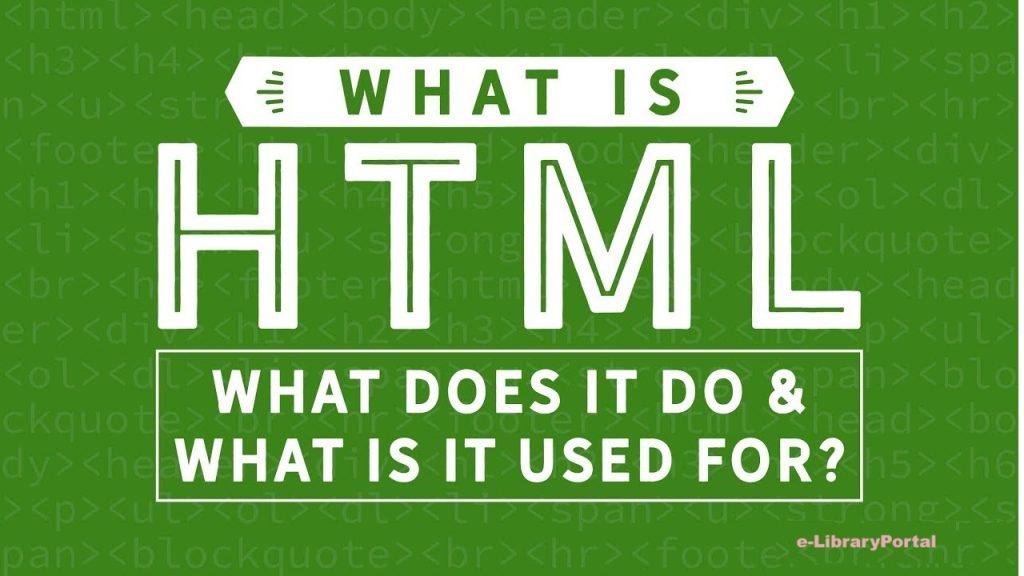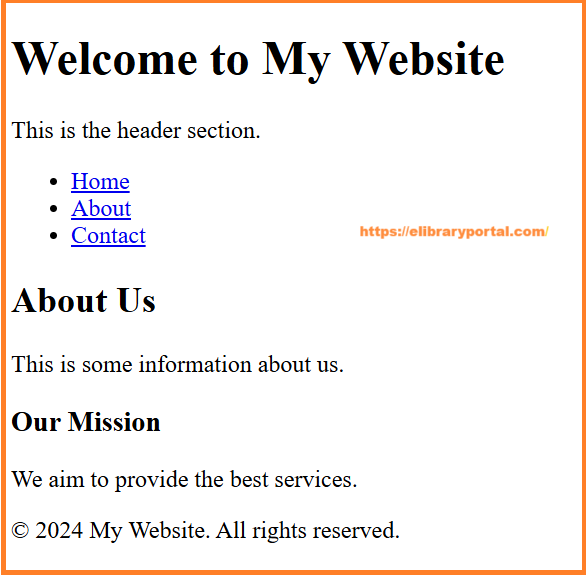
⟼HTML stands for Hyper Text Markup Language
⟼Markup means a set of markup tags
⟼ Hyper Text: Hyper Text simply means “Text within Text”. A text has a link within it, is a hypertext. Every time when you click on a word which brings you to a new webpage, you have clicked on a hypertext.
⟼Markup language: A markup language is a programming language that is used make text more interactive and dynamic. It can turn a text into images, tables, links etc.
OR
HTML (HyperText Markup Language) is the standard language used to create and structure web pages. It defines the structure and layout of a webpage by using a series of elements or tags. These elements tell the browser how to display content, such as text, images, links, and other media on a webpage.
HTML
HTML developed by Tim Berners-Lee in 1990, HTML is a computer language devised to allow website creation. These websites can then be viewed by anyone else connected to the Internet. It is relatively easy to learn, with the basics being accessible to most people in one sitting.
Syntax Follow
<!DOCTYPE html>
<html>
<head>
<title> Title Bar Name</title>
</head>
<body>
//Use Tag Here
</body>
</html>
Explain
- <!DOCTYPE html>:- Defines declaration this document is an HTML5 document.
- <html>:- Component is the root Component of a HTML page
- <head>:- Component contains meta data about the HTML page
- <title>:- Component determines a title for the HTML page (which is appeared in the program’s title bar or in the page’s tab)
- <body>:- Component characterizes the record’s body, and is a holder for all the noticeable substance, for example, headings, passages, pictures, hyperlinks, tables, records, and so on
Benefits of HTML
- Faster Loading:-
- Browser Compatibility:-
- Browser Compatibility:-
- Website Accessibility :-
HTML Versions .
HTML has gone through several versions since it was first created in the early 1990s. The latest version is HTML5, which was introduced to improve the language by providing better support for multimedia, graphics, and APIs.
| Version | Year |
| HTML | 1991 |
| HTML 2.0 | 1995 |
| HTML 3.2 | 1997 |
| HTML 4.01 | 1999 |
| XHTML | 2000 |
| HTML5 | 2014 |
| HTML 5.1 | 2016 |
| HTML 5.2 | 2017 |
Relationship with Other Technologies
CSS (Cascading Style Sheets): While HTML defines the structure of the webpage, CSS is used to style it, such as changing colors, fonts, and layouts.
- JavaScript: JavaScript is used to add interactivity and dynamic content to an HTML page, such as form validation or animations.
Why HTML is Important
HTML is the foundation of all web pages. Without HTML, websites wouldn’t exist in their current form. It allows developers to:
- Create structured documents.
- Link to other pages or websites.
- Embed multimedia content like videos and audio.
- Ensure accessibility for all users.






